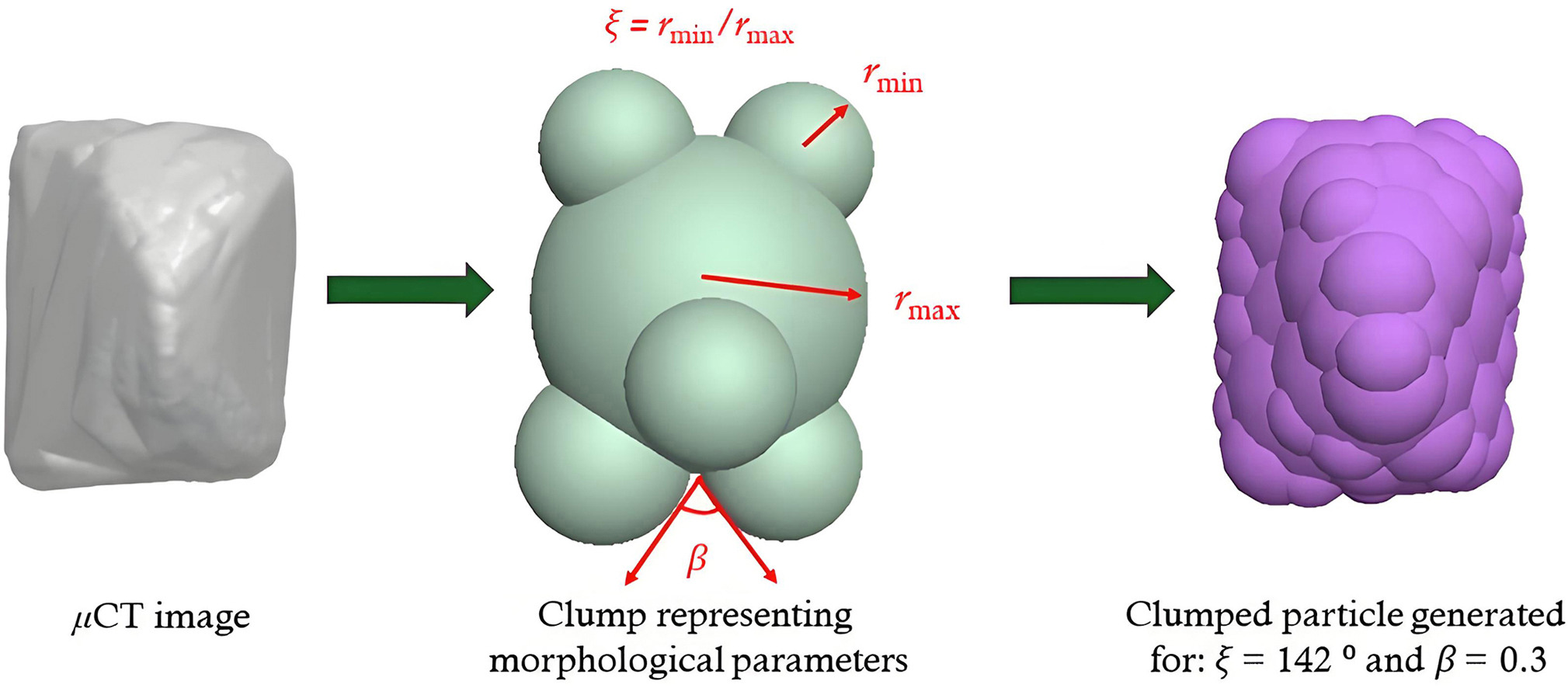• Macroscopic response of granular material is affected by mean effective stress and intermediate stress ratio.
• Principal deviatoric stress stays stable with shear strain and rises with higher intermediate stress ratios.
• Principal deviatoric strain deviates from its initial value as shear strain increases.
• Peak state friction angle significantly affects peak stress ratio at Lode angle +30° compared to Lode angle −30°.
This article investigates the strength and frictional dependence on the stress Lode angle in drained true triaxial configurations using the discrete element method (DEM). A clump logic based on the multi-sphere (MS) approach within the commercial DEM software, particle flow code (PFC3D), was employed to simulate realistic particle shapes. The simulation results indicate that deviatoric stress initially exhibits strain hardening, followed by softening, while pure dilation occurs from the onset of shear. The evolutions of deviatoric stress and volumetric strains are found to be independent of both mean effective stress and intermediate stress ratios (b). The mobilized peak friction angle initially increases up to a certain value of b, then decreases with a further increase in b. The mechanical coordination number (MCN) and sliding contact fractions (SCF) remain unique and independent of b values. Moreover, the critical state friction angle has a significant influence on the stress ratios at the stress Lode angle θ = +30° when compared to θ = –30°.

